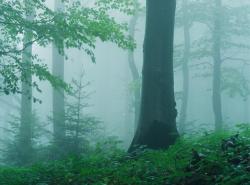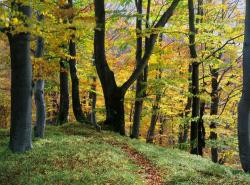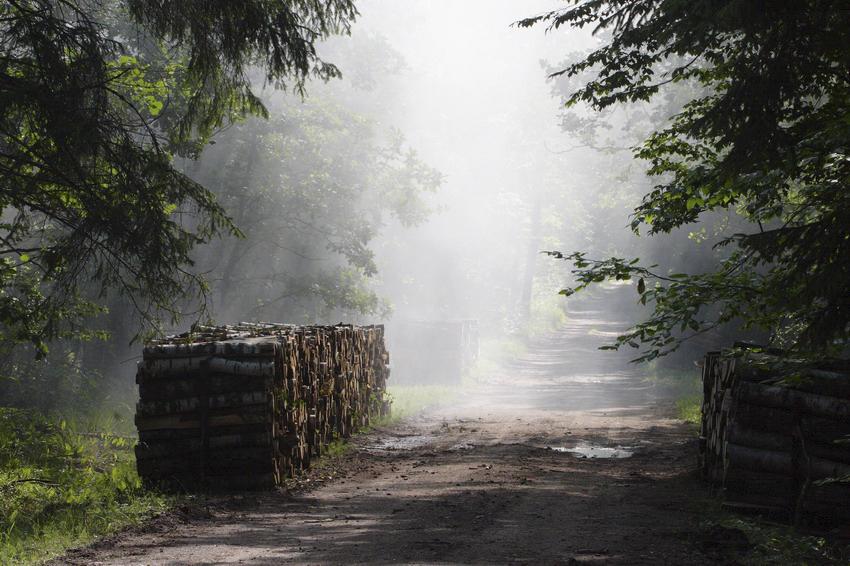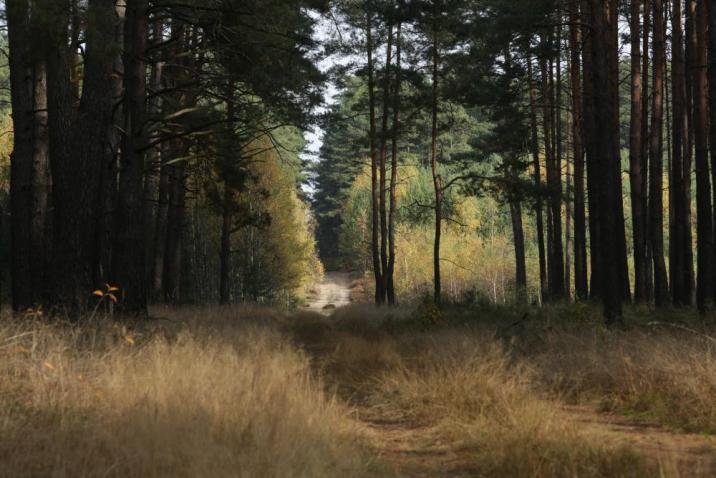 Asset Publisher
Asset Publisher
The State Forests National Forest Holding
The State Forests National Forest Holding is the largest organisation in the European Union managing forests, which belong to the State Treasury and celebrating its 90 anniversary this year.
Presently, we manage the area of one third of Poland's territory. Not long after the end of the Second World War, there was only 21 % of the area. Every year we plant 500 million of new trees, as we want Polish forests grow all the time.
Every year Polish foresters plant 500 million of trees.
85 % of nature reserves in Poland are located within the State Forests. 40 % of the forests managed by General Directorate of the State Forests are protected within the framework of European network Natura 2000. We fight against many threats: natural disasters, plaques of insects, trees' diseases, fires, pollutions, as well as poaching and vandalism.
We take care the forestry supplying the market with timber, as ecological and universal material, to be carried on in accordance with rules of balanced development (photography P.Fabjański).
One of our major tasks is making forests accessible to the society. We invite you to take advantage of these beautifully located within the forest wilderness holiday resorts, forester's lodges or guest rooms. That is for you, we create thousand kilometres of hiking trails, cycling paths or camping sites. All the above mentioned, you can find in service www.czaswlas.pl.
We also take care the forestry supplying the market with timber, as ecological and universal material, to be carried on in accordance with rules of balanced development. We obtain over 30 million of cubic meters of wood annually, twice as much as at the beginning of the nineties of the XX century.
Despite of this, the average of wood abundance per hectare of our forests is one fourth bigger than 20 years ago and 40% bigger than the average of European Union currently amounts.
In Poland in sectors connected with the forestry, there work about 375 thousand of people. It means that each 40 working Pole works in the forest.
In Poland in sectors connected with the forestry, there work about 375 thousand of people. It means that each 40 working Pole works in the forest. The sector of wood processing works out approximately 8 % of our GDP (Gross Domestic Product). Among others, thanks to the timber from the State Forests Poland is the 10 largest producer of furniture in the world, and the 4 largest furniture exporter.
The State Forests employ 25 thousand people. That way we are the 9 biggest employer in Poland. Among the largest companies in our country it takes 22 place in respect of its incomes and 11 place in respect of its profits. The value of assets, we manage, reaches 300 million zl. If we add social values, it will be worth one billion zlotych. We do not use money from the budget, but we earn money on our own to support the business. In spite of the financial crisis, since 2002, we continuously note down profits. Moreover, we pay taxes amounting 1,3 billion zl annually.
87 % of Poles think, the foresters are competent. We willingly share our knowledge of Polish forests, of their history and of nature values with the others. We publish books, periodicals, brochures; we also administer the website www.lasy.gov.pl . For children, the youth and teachers, we prepared internet service "E-lynx' Lynx Forest" (www.erys.pl). Our staff has supported schools in field of nature education for years. We also organise many actions to let people broaden their knowledge about forest, nature and ecology.
 Asset Publisher
Asset Publisher
 Asset Publisher
Asset Publisher
Położenie Nadleśnictwa
Położenie Nadleśnictwa
Nadleśnictwo Oborniki położone jest w północno-zachodniej części terenu województwa wielkopolskiego w następujących powiatach : obornickim, szamotulskim, czarnkowsko-trzcianeckim, chodzieskim i poznańskim. Wchodzi w skład największego zwartego kompleksu leśnego na Nizinie Wielkopolskiej ‑ Puszczy Nadnoteckiej obejmuje jej wschodnią część określaną jako "Puszcza Obornicka".
Grunty Nadleśnictwa położone są między 16º26'42" a 16º58'26" długości geograficznej wschodniej oraz 52º31'07" a 52º49'56" szerokości geograficznej północnej.
Grunty w zasięgu terytorialnym Nadleśnictwa graniczą z gruntami w zasięgach terytorialnych nadleśnictw: Wronki, Krucz, Sarbia, Podanin, Durowo w RDLP Piła i Łopuchówko oraz Pniewy w RDLP Poznań.
Odległość między najbardziej wysuniętymi na północ i na południe zewnętrznymi skrajami kompleksów wynosi 37 km, zaś tak samo mierzona odległość wschód - zachód 36 km.
Zasięg terytorialny Nadleśnictwa obejmuje 60 728 ha.
Grunty Nadleśnictwa zajmują powierzchnię 20 892,79 ha, podzielone są na trzy obręby leśne: Kiszewo, Oborniki i Obrzycko oraz na trzynaście leśnictw. Położone są w województwie wielkopolskim na terenie następujących powiatów i gmin: powiat obornicki, szamotulski, chodzieski, czarnkowsko-trzcianecki, poznański; gminy Budzyń, Oborniki, Obrzycko, Połajewo, Rogoźno, Rokietnica, Ryczywół, Suchy Las, Szamotuły.
Według „Regionalizacji przyrodniczo-leśnej opartej na podstawach ekologiczno-fizjograficznych" opracowanej przez Instytut Badawczy Leśnictwa (PWRiL W-wa 1990), Nadleśnictwo Oborniki położone jest na obszarze krainy przyrodniczo-leśnej Wielkopolsko-Pomorskiej (III). Przeważająca część Nadleśnictwa leży w Mezoregionie Puszczy Noteckiej, pozostała część obejmująca północno-wschodnie obrzeże obrębu Oborniki i rozproszone kompleksy leśne na południu Nadleśnictwa leżą w Mezoregionie Pojezierza Wielkopolskiego.
Położenie Nadleśnictwa według obecnie stosowanego (nawiązującego do uniwersalnej klasyfikacji Międzynarodowej Federacji Dokumentacyjnej) podziału Polski na regiony fizyczno-geograficzne w układzie dziesiętnym (Kondracki, 2002) Nadleśnictwo leży w obszarze Europy Zachodniej (1-924), w podobszarze Pozaalpejskiej Europy Zachodniej (1-924.3), w Prowincji Niżu Środkowoeuropejskiego (31), Podprowincji Pojezierza Południowobałtyckiego (315) w makroregionie Pradoliny Toruńsko-Eberswaldzkiej oraz w makroregionie Pojezierza Wielkopolskiego.


 fot. Paweł Fabijański
fot. Paweł Fabijański
 fot. Paweł Fabijański
fot. Paweł Fabijański
 fot. Paweł Fabijański
fot. Paweł Fabijański







